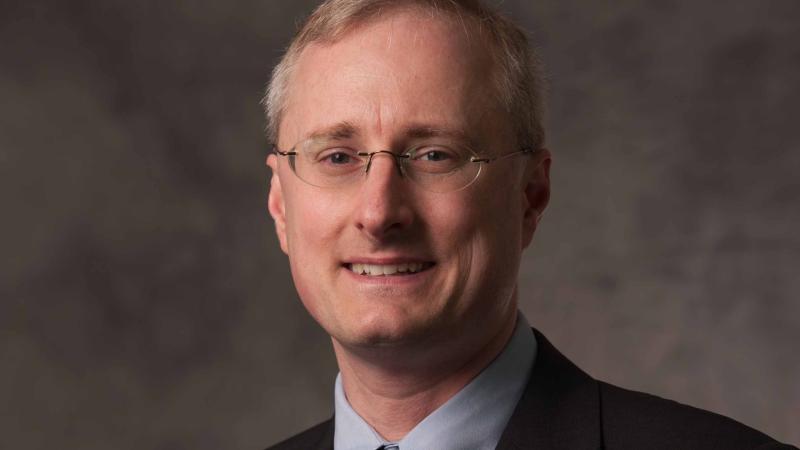In a number of recent studies, researchers at Rensselaer Polytechnic Institute have made enormous strides toward ASD prediction and diagnosis
September 21, 2018

Researchers at Rensselaer Polytechnic Institute—led by Juergen Hahn, professor and head of biomedical engineering—are continuing to make remarkable progress with their research focused on autism spectrum disorder (ASD). A recent paper authored by Hahn and Jill James from the University of Arkansas for Medical Sciences (UAMS) in the journal Research in Autism Spectrum Disorders discusses their work on predicting with approximately 90 percent accuracy whether a pregnant mother has a 1.7 percent or a tenfold increased risk of having a child diagnosed with ASD.
Currently there is no test for pregnant mothers that can predict the probability of having a child that will be diagnosed with ASD. Recent estimates indicate that if a mother has previously had a child with ASD, the risk of having a second child with ASD is approximately 18.7 percent, whereas the risk of ASD in the general population is approximately 1.7 percent.
“However,” said Hahn, a member of the Rensselaer Center for Biotechnology and Interdisciplinary Studies, “it would be highly desirable if a prediction based upon physiological measurements could be made to determine which risk group a prospective mother falls into.”
Hahn’s work in developing a physiological test to predict autism risk is part larger emphasis on Alzheimer’s and neurodegenerative diseases at the Center for Biotechnology and Interdisciplinary Studies, and an example of how the interdisciplinary life science and engineering interface at Rensselaer offers new perspectives and solutions for improving human health.
In this study, metabolites of the folate-dependent transmethylation and transsulfuration biochemical pathways of pregnant mothers were measured to determine whether or not the risk of having a child with autism could be predicted by her metabolic profile. Pregnant mothers who have had a child with autism before were separated into two groups based on the diagnosis of their child whether the child had autism or not. Then these mothers were compared to a group of control mothers who have not had a child with autism before.
The researchers concluded that while it is not possible to determine during a pregnancy if a child will be diagnosed with ASD by age 3, they did find that differences in the plasma metabolites are indicative of the relative risk (18.7 percent vs 1.7 percent) for having a child with ASD.
“These are exciting results as they hint at differences in some metabolic processes that potentially play a role in increasing the risk of having a child with ASD,” said Hahn.
In addition to the lead authors, Juergen Hahn of Rensselaer and Jill James of UAMS, this work included collaborators from Rensselaer, the University of Arkansas for Medical Sciences, and the MIND Institute at UC Davis.
This new research follows an earlier study published in 2017, which developed an algorithm based on levels of metabolites found in a blood sample that can accurately predict whether a child is on the autism spectrum. A follow-up study this spring was also highly promising in assessing whether a child is on the autism spectrum. These results have the potential for earlier diagnosis for ASD, and efforts are underway to develop a commercially available test based upon these findings.
Important research like this exemplifies the vision of The New Polytechnic, an emerging paradigm for higher education which recognizes that global challenges and opportunities are so great they cannot be adequately addressed by even the most talented person working alone. Rensselaer serves as a crossroads for collaboration—working with partners across disciplines, sectors, and geographic regions—to address complex global challenges, using the most advanced tools and technologies, many of which are developed at Rensselaer. Research at Rensselaer addresses some of the world’s most pressing technological challenges—from energy security and sustainable development to biotechnology and human health.
About Rensselaer Polytechnic Institute
Rensselaer Polytechnic Institute, founded in 1824, is America’s first technological research university. For nearly 200 years, Rensselaer has been defining the scientific and technological advances of our world. Rensselaer faculty and alumni represent 86 members of the National Academy of Engineering, 18 members of the National Academy of Sciences, 26 members of the American Academy of Arts and Sciences, 8 members of the National Academy of Medicine, 8 members of the National Academy of Inventors, and 5 members of the National Inventors Hall of Fame, as well as 6 National Medal of Technology winners, 5 National Medal of Science winners, and a Nobel Prize winner in Physics. With 7,000 students and nearly 100,000 living alumni, Rensselaer is addressing the global challenges facing the 21st century—to change lives, to advance society, and to change the world. To learn more, go to www.rpi.edu.